Boiling Point: Why razing Joshua trees for solar farms isn’t always crazy
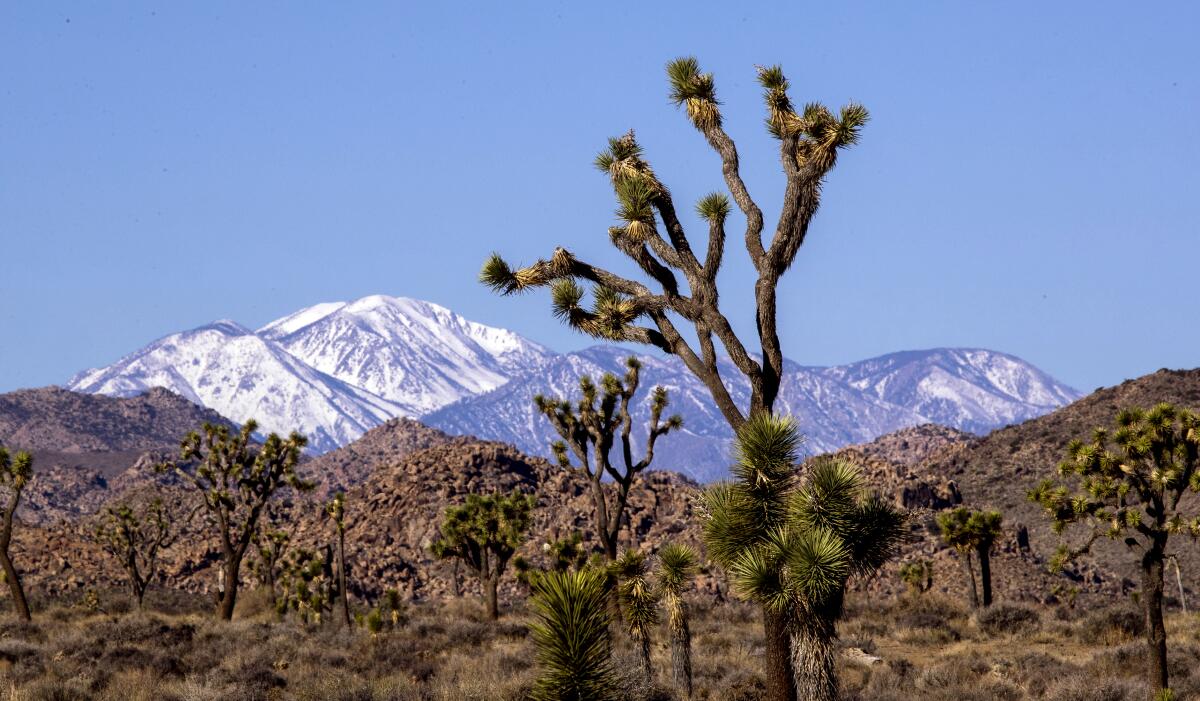
- Share via
We choose to do these things not because they are easy, but because they are hard.
President John F. Kennedy was talking about going to the Moon during the 1960s. But he may as well have been describing this decade’s defining challenge — throttling down heat-trapping pollution from fossil fuels, agriculture and other industries.
JFK’s admonition came to mind as I read this story by my L.A. Times colleague Melody Petersen, about a developer preparing to raze thousands of Joshua trees to build a solar project in the California desert. Some conservation activists and nearby residents are understandably furious. Why, they’ve asked, are we destroying the environment to save the environment?
You're reading Boiling Point
Sammy Roth gets you up to speed on climate change, energy and the environment. Sign up to get it in your inbox twice a week.
You may occasionally receive promotional content from the Los Angeles Times.
I’ll do my best to answer.
There’s no greater threat to Joshua trees — or humans — than carbon pollution building up in the atmosphere, spurring constant temperature records, drier droughts and more destructive fires that have conspired to decimate Joshua tree forests across the Southwest. The York fire alone may have burned more than 1 million Joshua trees last summer in and around Mojave National Preserve. Long term, scientists estimate that Joshua trees could lose upwards of 90% of their current range.
What about rooftop solar systems, you may ask?
They’re a great climate solution, and we should build as many of them as possible. Gov. Gavin Newsom failed miserably when he allowed his appointees to gut rooftop solar incentives, and again last month when he let them approve weak-sauce subsidies for small-scale “community solar” installations that don’t take up nearly as much land as big solar farms in the desert.
But we also shouldn’t cover our eyes and ears and ignore the research telling us we need big solar farms too.
Human civilization consumes unimaginable amounts of energy. Fueling our coffee makers, cars and computers — plus our fans, factories, and phones — uses way more energy than we can generate on rooftops, parking lots and other urban spaces.
Even a researcher behind one of the most optimistic studies toward rooftop solar’s potential — a federal study cited frequently by rooftop solar advocates — told me tackling the climate crisis will require lots of large-scale solar. There’s no other way.
The question is where to build all the large-scale solar, and how to do it with as little environmental damage as possible.
If you want to adopt a stance of “no Joshua trees need die,” that’s your call. But I don’t think it’s possible.
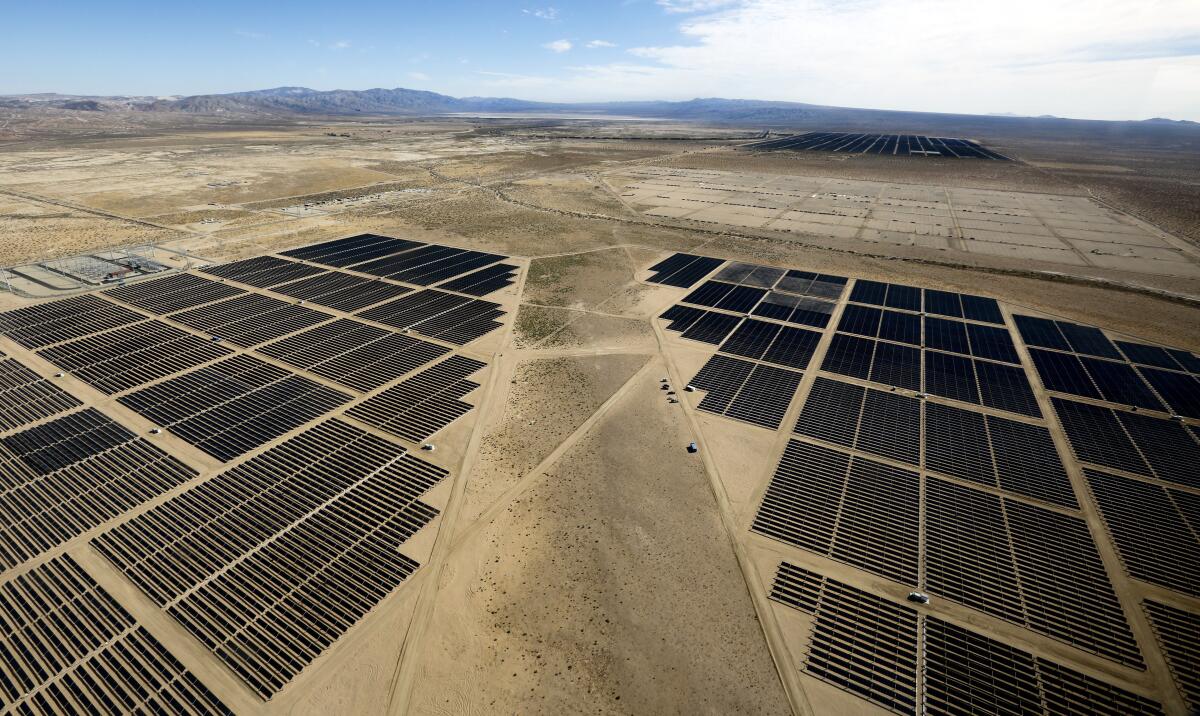
The desert Southwest is home to same of the nation’s sunniest terrain, much of it within power-line distance of L.A., Phoenix, Las Vegas and other electricity-hungry cities. Some of the world’s biggest solar farms and battery storage projects have been built on those lands over the last decade, with President Biden hurrying to approve more. In April, the Biden administration announced it had achieved a congressional mandate to approve 25 gigawatts of renewable energy on public lands by 2025.
There are places to build solar projects besides pristine ecosystems. But there’s no get-out-of-climate-change-free card.
Want to take water-stressed agricultural lands out of production and replace crops with solar panels? Some farmers will take the deal, but their neighbors might fight like hell to stop you. What about private lands in the desert, just outside rural towns? Turns out a lot of people don’t want to live near industrial facilities. And God forbid you should try to build a solar project near “Double Negative,” landscape artist Michael Heizer’s outdoor installation in southern Nevada. Art lovers helped defeat that one.
Not all of those arguments are equally valid, in my view. But they all exist. They’re all being used to block climate-friendly energy development and keep humanity hooked to planet-wrecking fossil fuels. Pretending otherwise is a recipe for disaster.
Hence the need to accept killing some Joshua trees in the name of saving more Joshua trees.
I feel kind of terrible saying that, because I love Yucca brevifolia. I lived in Palm Springs for several years and fell in love with the desert by way of hiking and camping trips to Joshua Tree National Park, Death Valley and Mecca Hills Wilderness.
But I’ve spent 10 years reporting on energy and found it impossible to reach any other conclusion.
I’m not saying nothing matters except carbon. Paving over Joshua Tree National Park would be a terrible idea.
What we need is compromise. As I’ve written previously, conservation groups, solar companies and government agencies should keep working on good-faith efforts — much more quickly, please — that would hasten renewable energy development while also protecting 30% of U.S. lands and waters by 2030 and 50% by 2050, goals that scientists say are crucial for biodiversity.
We choose to do these things not because they are easy, but because they are hard. It’s easy to say, “Don’t kill Joshua trees; build solar farms somewhere else; fix the climate some other way.” It’s hard to say: “Making up for our past mistakes requires sacrifice; this is a burden we must bear.” It’s even harder when the past mistakes weren’t so much “ours” as they were ExxonMobil’s.
But this is the reality we face. This is our moon shot.
On that note, here’s what else is happening around the American West:
OUR CHANGING CLIMATE
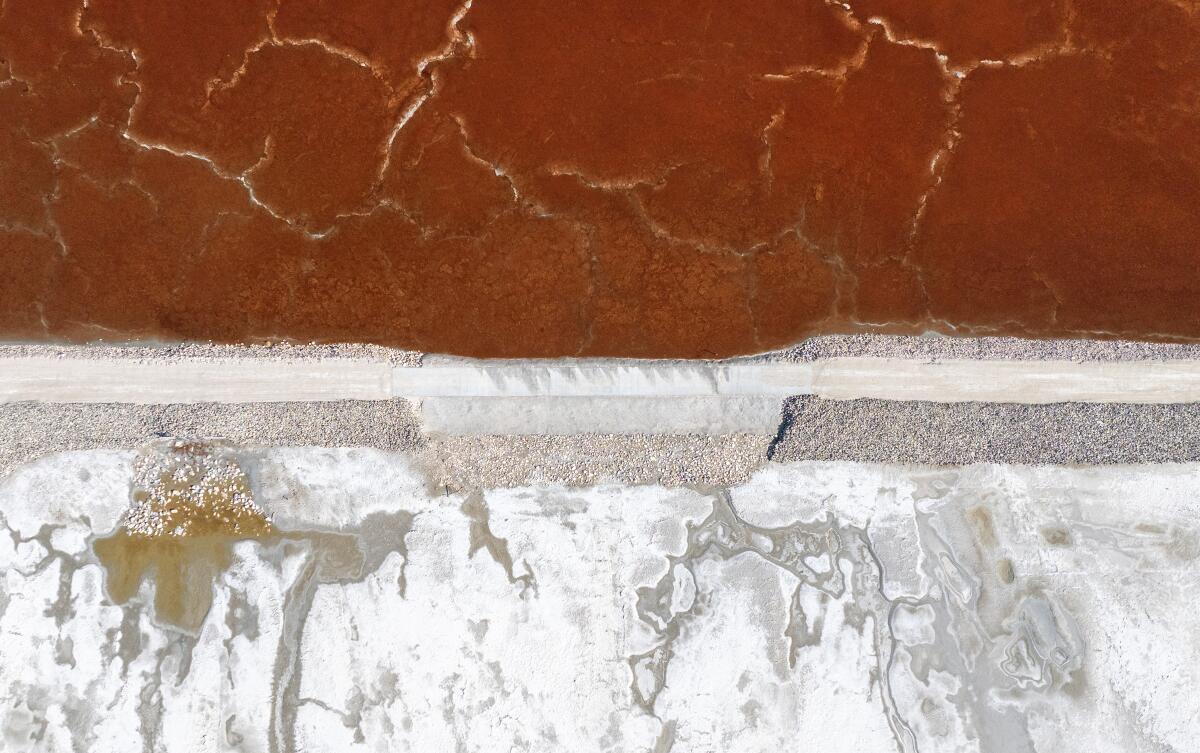
Summer is getting underway shortly, so let’s start by talking about heat — one of the most dangerous consequences of global warming, even if it’s sneakier than fires or storms. My L.A. Times colleague Hayley Smith has a great explainer on how fossil fuel pollution is driving more intense heat waves with higher death counts. Hayley also wrote about how hot it could get in the Western U.S. this summer — and the long-term health threat to disadvantaged communities as temperatures keep rising.
The Associated Press reported a record 2,300 heat deaths in the U.S. last summer — and that number is likely a huge undercount. Phoenix is keeping some cooling centers open overnight as it grapples with worsening heat, the AP’s Anita Snow writes.
In other extreme weather news, scientists have produced yet another study suggesting the Great Flood of 1862 was far from the worst inundation California has seen. My colleague Grace Toohey explained how researchers studying “sag ponds” along the San Andreas Fault are figuring it out, and what their findings might portend for a future where the wets are getting wetter.
At least Californians shouldn’t have to worry too much about hurricanes this year, per this story by Hayley Smith.
“You don’t want to cry wolf too soon, but you certainly don’t want to wait until the wolf’s eating you, either.” That’s what one scientist told Hayley — who has been extremely busy the last few weeks — for a story about the U.S. Drought Monitor, which for a quarter-century has kept Americans informed about water scarcity. Everybody loves the Drought Monitor, but is it up to the task of measuring water supplies against the backdrop of a changing climate? Hayley tackles that important question.
Moving from water scarcity to solutions, The Times’ Ian James wrote about the Biden administration’s $99 million investment in the nation’s largest wastewater recycling plant, which should help Southern California reduce its reliance on the Colorado River and other climate-strained water supplies. One local water official called the project “the Hoover Dam of our time.”
There’s also lots of money pouring into satellite technology to help identify and combat wildfires before they spiral out of control — money from NASA, Google, SpaceX, the Environmental Defense Fund, California agencies and more. Once again, it was Hayley Smith who wrote about it. See also this story by the Associated Press’ Tammy Webber about the risks posed by wildfires and other weather extremes to sites where radioactive materials are stored, including Southern California’s Santa Susana Field Lab.
“Twenty-two hundred years old and counting.” It’s not all bad news. As the planet heats up, scientists are learning that giant sequoias can, in fact, be killed by bark beetles. OK, that is bad. But my colleague Steve Lopez wrote a beautiful column about the scientists climbing General Sherman to check the health of the world’s largest tree. Thank goodness, the prognosis is good.
In related news, goldspotted oak borers are on a tree-killing rampage across Southern California — and they’re inching closer to the Santa Monica Mountains’ beloved coast live oaks. The Times’ Lila Seidman covered the fight to slow the beetle’s advance.
THE ENERGY TRANSITION
Going back to where we started, let’s consider more trade-offs between clean energy and conservation. These are active debates not only in California but also in the Grand Canyon State, where the Arizona Republic’s Brandon Loomis has a gorgeous story about the Sky Islands — an isolated series of mountain ranges that are changing with the climate, and also with a flurry of proposed mines that would extract copper, manganese and other minerals crucial for renewable energy technologies.
The company behind one of those proposed manganese mines just got $20 million from the Biden administration, the Republic’s Sarah Lapidus reports. Elsewhere in Arizona, Indigenous leaders and religious rights groups are asking the U.S. Supreme Court to block a copper mine on federal lands at Oak Flat, per the Republic’s Debra Utacia Krol. “Oak Flat is the place where generations of Apaches have come to connect with our Creator, our faith and our land,” said Wendsler Nosie, head of Apache Stronghold.
In Washington state, meanwhile, Gov. Jay Inslee rejected a plan to halve the size of the state’s largest proposed wind farm, amid concerns from conservation activists and the Yakama Nation. (Details here from the Seattle Times’ Conrad Swanson.) In Colorado as in other states, local governments are throwing up roadblocks to solar, per this story by the Denver Post’s Elise Schmelzer.
I can say with near-certainty that ever more conflicts are on the horizon.
Again, it’s not all bad news.
Deep-red Wyoming just approved the state’s largest solar farm — a whopping 771 megawatts plus a 269-megawatt battery, the Casper Star-Tribune’s Zakary Sonntag reports. In neighboring Montana, construction got started on a wind farm that will supply electricity to Washington’s Puget Sound Energy, per the Billings Gazette’s Tom Lutey. The wind turbines could help Puget Sound replace coal power it currently imports from Montana’s Colstrip plant, the subject of my recent Repowering the West deep dive.
Also, Portland General Electric intends to buy a 20% stake in an electric line that would help move wind power between the Pacific Northwest and the Midwest. Again, here’s Tom Lutey with the details. And again, this line could help Portland ditch Colstrip.
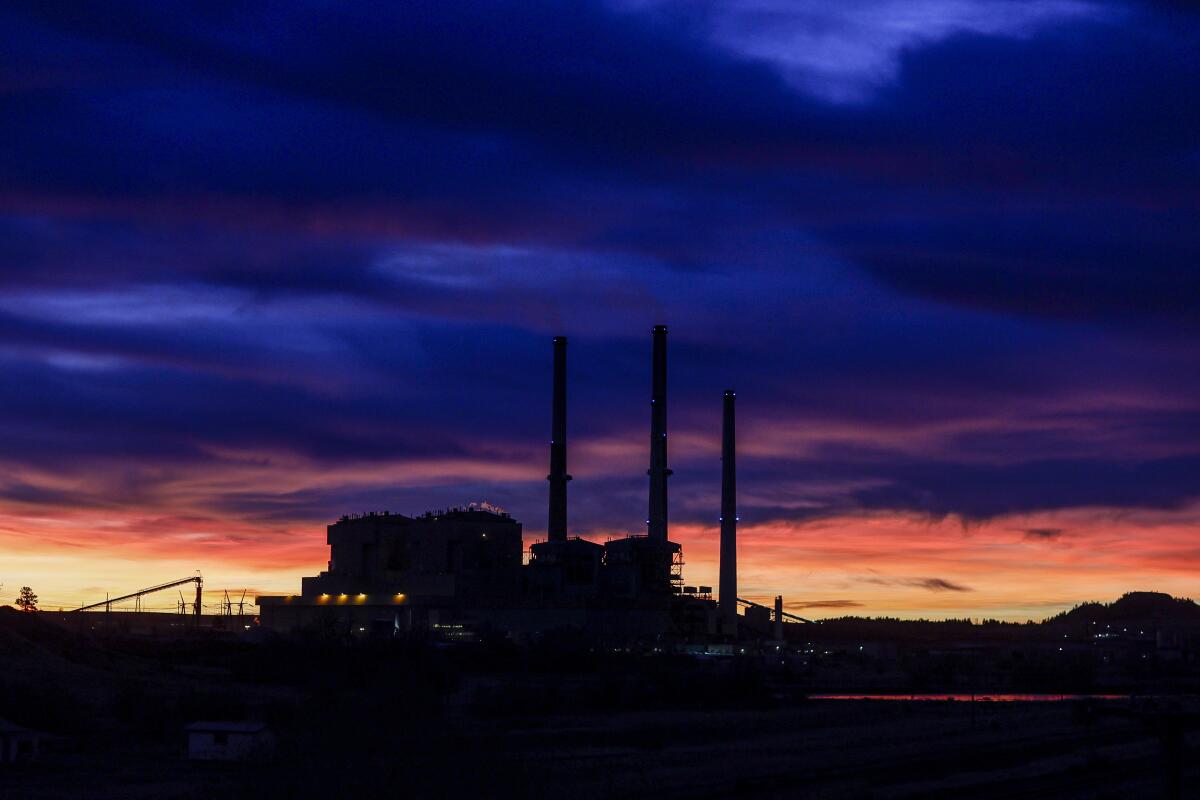
Speaking of power lines — we need a lot more of them to move renewable electricity from place to place, but they have a nasty habit of sparking wildfires. And those fires have a habit of landing electric utilities with huge liabilities when they destroy homes and kill people. Warren Buffett’s Berkshire Hathaway Energy tried to persuade Oregon and Idaho to limit its liabilities, but the company struck out in both states. (Stories by OPB’s Courtney Sherwood and Idaho Capital Sun’s Clark Corbin.)
Returning again to where we started this newsletter, we’ll need more than big solar farms to fight climate change.
But following a vote by Gov. Gavin Newsom’s appointees to cut rooftop solar incentives, California’s home solar market has not been faring well — especially the last few months. Canary Media’s Jeff St. John reports on new data that paint a grim picture.
What about other types of low-carbon energy, beyond solar and wind?
As it happens, the Biden administration is looking to expand clean energy tax credits to other stuff — possibly including marine and hydrokinetic energy, nuclear fission and fusion, hydropower and geothermal. Details here from Reuters’ Valerie Volcovici.
President Biden also signed a law banning U.S. imports of Russian uranium, and directing $2.7 billion toward expanded domestic production of uranium for nuclear power. That money could flow toward uranium mines in Arizona, Colorado, Utah and Wyoming, the Colorado Sun’s Jason Blevins reports — potentially creating another one of those clean energy/conservation conflicts.
One last energy thing: California was poised to require homeowners who replace their old or broken air conditioners with climate-friendly electric heat pumps that could also sub in for gas heating. Good climate solution, right? But now officials are backing off, Canary Media’s Alison F. Takemura reports. They’ve seemingly decided the requirement is too expensive.
Unless they change course, the result will be more heat-trapping carbon in the atmosphere — and more dangerous fumes in our kitchens. The Times’ Tony Briscoe wrote about a new study finding a single pollutant emitted by gas stoves may contribute to tens of thousands of premature deaths in the U.S. each year — and hundreds of thousands of childhood asthma cases.
HOW WE GET AROUND

I’ve started taking public transit more lately — and as much as I love it, it’s obvious how much more we need to invest in it. Slow-moving Metro rail. Poor communications from Amtrak headquarters on the East Coast. Hard-to-find bus stops.
I’m eagerly awaiting the day when high-speed rail can get me between Southern and Northern California, even as “bullet train” construction crawls along. I was encouraged by this story from The Times’ Colleen Shalby, who reported that the environmental review for 38 miles of high-speed rail between Burbank and Palmdale is now complete. If the review is approved this month, all 463 miles of bullet train between Los Angeles and San Francisco would be environmentally cleared for construction.
Even as California spends tens of billions of dollars on public transit, the state also keeps widening freeways — a climate-harming waste of money that only fuels more traffic congestion, as I ranted about a few months ago. That’s why environmental groups are suing a state agency to block a highway expansion in Yolo County, as Edvard Pettersson reports for Courthouse News Service.
Gov. Gavin Newsom, meanwhile, has proposed limiting California’s budget deficit in part by cutting $600 million from a program that funds climate-friendly transportation strategies including bike lanes and pedestrians improvements. (Story by Politico’s Alex Nieves.) In better news, Southern California communities are getting $3 million in federal funds to clean up polluted “brownfield” sites, some of which may be converted to biking and hiking trails. Details here from my L.A. Times colleague Tyrone Beason.
And what about Big Oil, the ExxonMobils and Chevrons of the world working to keep us hooked on gasoline vehicles?
Well, a bill from state Assemblymember Laura Friedman (D-Glendale) that would have put oil companies on the hook financially for people getting sick near oil extraction site was defeated without a vote in the Assembly, Politico reports. In Vermont, though, lawmakers passed much broader legislation holding oil companies liable for damages caused by climate change, the Associated Press’ Lisa Rathke reports. And Republican Gov. Phil Scott allowed the bill to become law, albeit without his signature.
Vermont is way ahead of California on this one.
WATER IN THE WEST
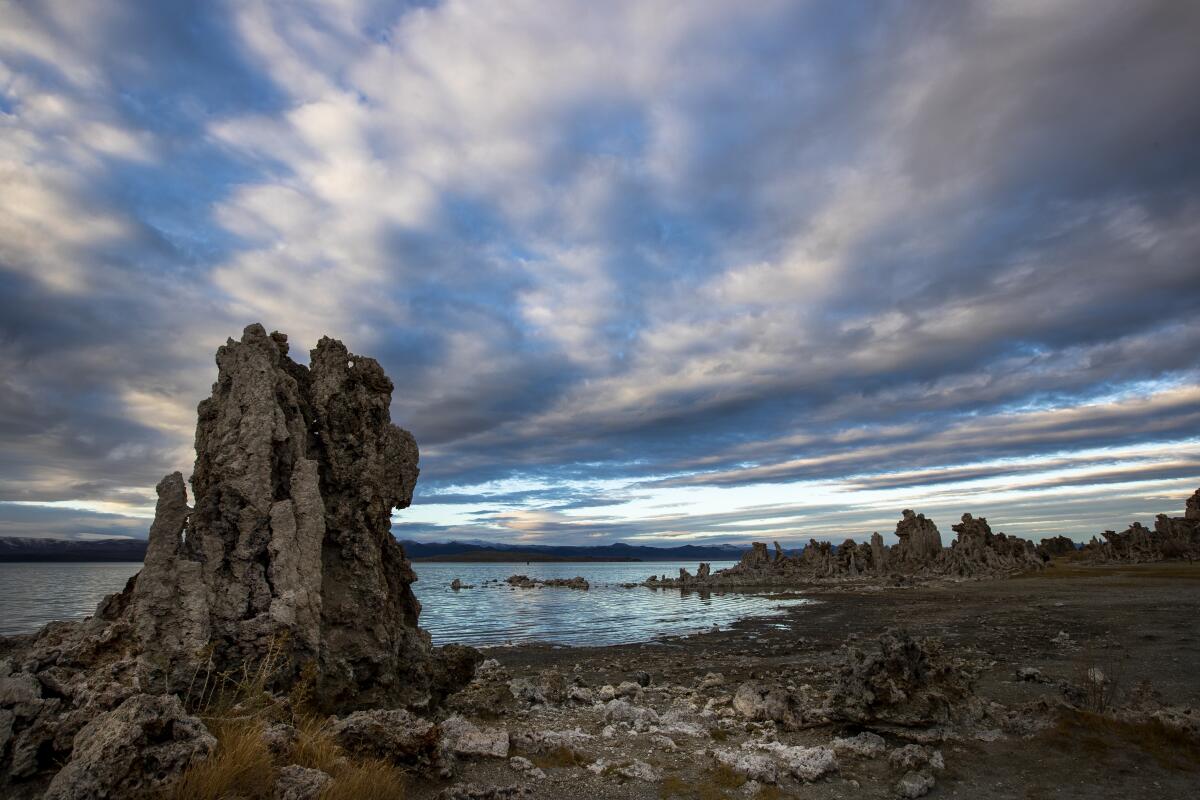
Los Angeles could be taking more water from Mono Lake this year — but in a win for migratory birds and the beleaguered lake’s ecosystem overall, the city has chosen to limit withdrawals. Details here from my L.A. Times colleague Ian James.
“I think it’s the first major environmental accomplishment for water in the Bass administration,” said Mark Gold, director of water scarcity solutions for the Natural Resources Defense Council, referring to Los Angeles Mayor Karen Bass.
I appreciated Ian’s story not only because Mono Lake is worth saving, but because it may be a sign that California’s biggest and most powerful city — with our history of blatant water theft — is adapting to an era of ever-more-stringent water limits.
Gone are the days of “Cadillac Desert.” Upon us are the days of climate-fueled drying, and taking ecosystem needs into account, and understanding that everyone — cities, farmers, wildlife — must learn to exist in harmony, in balance with each other.
So it’s super cool to see researchers studying the habitat importance of groundwater-fed ecosystems along Southern California’s Kern and Santa Clara rivers — a topic that Ian explored in this wonerful story. I was less thrilled to be reminded that the company behind Arrowhead 100% Mountain Spring Water is still bottling water from California’s San Bernardino National Forest. Ian writes that environmental activists are now urging California regulators to investigate the company, BlueTriton Brands.
Indeed, not everyone is doing a great job adjusting to an era of increasing limits.
The Kings County Farm Bureau is suing California over groundwater regulation. Elsewhere in the San Joaquin Valley, a former water district official pleaded guilty to conspiring to steal water from the government, The Times’ Jessica Garrison reports.
A bunch of California lakes are also in bad shape, for various reasons. There’s an awful algae bloom at Clear Lake up north; my colleague Terry Castleman pulled some gross satellite photos. The Sacramento Bee’s Ishani Desai wrote about new research finding that rampant wildfire smoke, fueled by climate change, may be hurting the health of Tahoe and other treasured lakes.
Down at the Salton Sea, meanwhile — southeast of Palm Springs, near the farm fields of Mecca and the Imperial Valley — people keep moving to sun-baked towns for affordable housing and a relaxed quality of life, even as the lake’s receding shoreline fills the air with windblown dust that’s terrible for kids’ lungs. Video journalist Zoë Meyers produced a haunting piece for inewsource that tells the story as well as any I’ve seen. The stuff about the dusty soccer field with no grass is especially heart-wrenching.
OK, to end the water portion of this journey on a more hopeful note...
After two wet winters, California’s largest reservoir, Lake Shasta, has gone from parched to popping. Check out stunning before-and-after satellite photos, courtesy of The Times’ Terry Castleman. As of late last month, Lake Shasta was 96% full.
There’s also cool stuff happening at the Port of Los Angeles, where waterfront warehouses are being renovated for sustainable ocean research and technology. Businesses are working to limit carbon pollution from ships, build parts for offshore wind farms and more. Here’s the story from my colleague Roger Vincent, who writes that the AltaSea complex “is bringing new purpose to a previously moribund wharf that once played a rich part in the evolution of Southern California.”
Finally, the Navajo, Hopi and San Juan Southern Paiute Tribes are ready for Congress to approve a $5 billion settlement that would help them access Colorado River Basin water that is rightfully theirs. The Times’ Tyrone Beason wrote about the settlement, which could help bring water to many Navajo Nation homes that don’t have running water — a longstanding injustice.
AROUND THE WEST
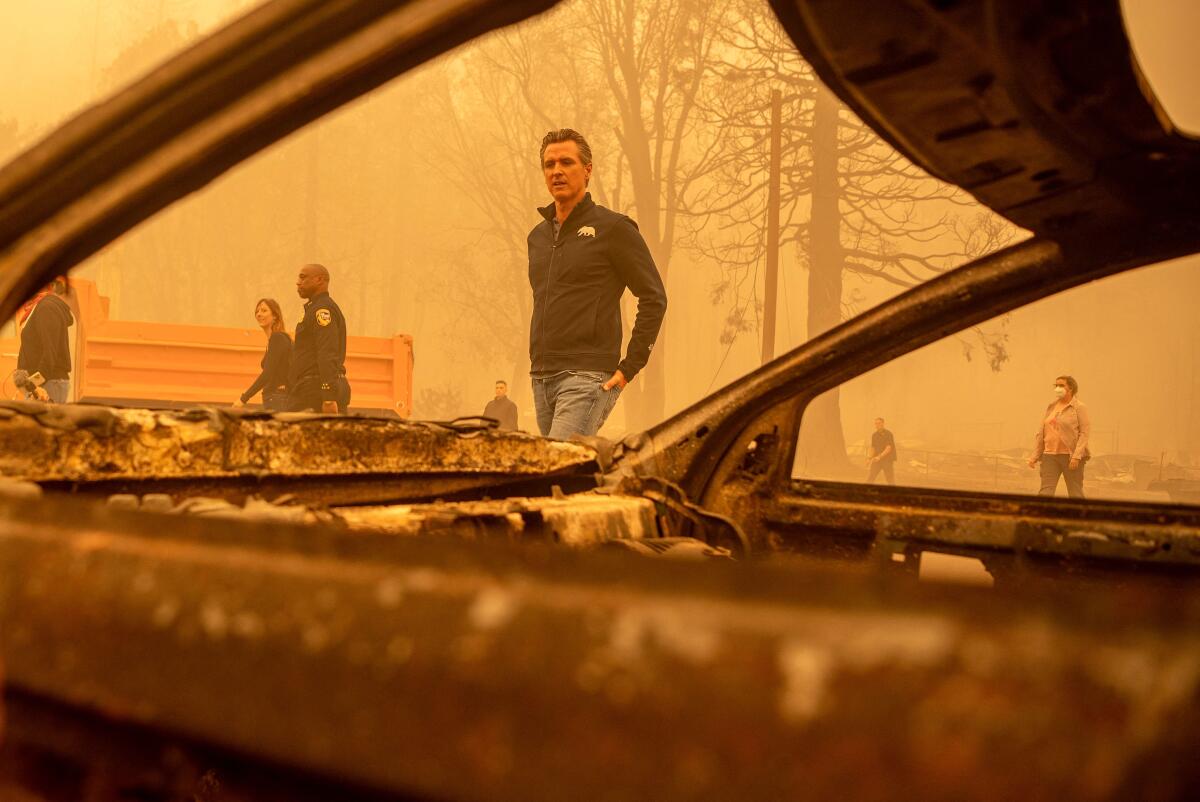
A few final news bytes before we wrap up. Let’s start with wildfires and home insurance:
- California’s most high-profile consumer watchdog group is blasting Gov. Gavin Newsom’s plan to make it easier for home insurers to raise rates as climate changes bring fiercer, more destructive wildfires. (Laurence Darmiento, L.A. Times)
- Opposing viewpoint: Veteran L.A. Times columnist George Skelton thinks Newsom’s proposal is a pretty good idea.
My colleagues had a few other stories about our public lands:
- Three and a half million acres of Mojave Desert near military installations are now a federal “sentinel landscape.” The goal is to protect tortoises and ecosystems as a whole, although there’s no new money involved. (Alex Wigglesworth, L.A. Times)
- “In Vegas, you can live in the middle of suburbia and be 15 minutes from trailheads where you can be completely alone and feel like you’re gonna die.” That’s what rock climbing legend Alex Honnold told my colleague Jack Dolan, for this story about why outdoors lovers are flocking to Sin City. Having spent a bunch of time on public lands in southern Nevada, I get it.
- There will soon be more public access to breathtaking views of the California coast at Big Sur, thanks to a deal between state officials and a Monaco billionaire. There will be trails, picnic tables, parking and restrooms. (Hannah Wiley, L.A. Times)
Furry critters have been involved in several eye-catching stories the last few weeks:
- A mountain lion was caught on a backyard security camera in Agoura Hills, near the future site of a wildlife crossing over the 101 Freeway. The Wallis Annenberg Wildlife Crossing recently reached a construction milestone. (Lila Seidman, L.A. Times)
- Catalina Island residents defeated a plan to shoot nonnative mule deer from helicopters. (Andrew J. Campa, L.A. Times)
- Why are so many baby sea lions dying along the California coast? Researchers aren’t sure yet. (Susanne Rust, L.A. Times)
And last but not least, two common practices that might be worth rethinking with climate in mind:
- Beyond Meat says it’s got a more nutritious, better-tasting fake meat product ready to go. Considering the enormous carbon pollution generated by the beef industry, this would be a major climate win if so. (Laurence Darmiento, L.A. Times)
- Cremation is terrible for the climate. And traditional burial takes up lots of land, not to mention cemeteries tend to use lots of water. So it’s cool that human composting will soon become legal in California. (Jeanette Marantos, L.A. Times)
ONE MORE THING

Longtime Boiling Point readers may know I’m a huge Dodgers fan. So I was tickled when a reader pointed out that the La Cañada Flintridge house just purchased by Shohei Ohtani — the superstar two-way player signed by the Dodgers to a record $700-million contract over the offseason — appears to have solar panels on the roof, based on a Google Earth photo of the home.
Are they solar photovoltaic panels, which generate electricity, or perhaps solar water heaters? Are they still on the house? I’m not sure. A Dodgers spokesperson politely declined my request to check with Ohtani. And I didn’t hear back from a representative for comedian Adam Carolla, from whom Ohtani purchased the mansion for $7.85 million, per The Times’ Jack Flemming.
Still: The fact that Ohtani — whose grinning bobblehead is currently staring at me from my living room bookshelf — may live in a solar-powered home is super cool to me. Go Dodgers.
This column is the latest edition of Boiling Point, an email newsletter about climate change and the environment in California and the American West. You can sign up for Boiling Point here. And for more climate and environment news, follow @Sammy_Roth on X.
Toward a more sustainable California
Get Boiling Point, our newsletter exploring climate change, energy and the environment, and become part of the conversation — and the solution.
You may occasionally receive promotional content from the Los Angeles Times.




